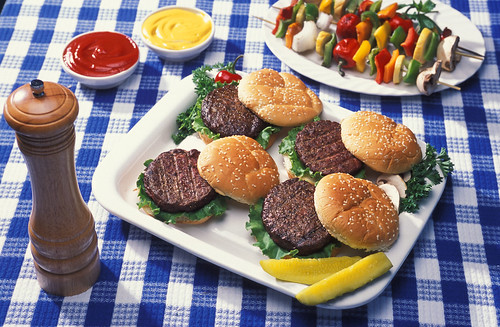
This post is part of the Science Tuesday feature series on the USDA blog. Check back each week as we showcase stories and news from USDA’s rich science and research portfolio.
USDA’s summer road trip may have come to an end, but many folks are still firing up the grills as summer winds down. With that, consumers still need to be conscious of food safety—from checking temperatures of grilled meat to discarding perishables that have been sitting out too long. A quick U-turn on our road trip explores USDA’s Agricultural Research Service (ARS) food safety research program, which addresses complex food safety challenges by developing scientific information and new technologies to control foodborne contaminants.
One way ARS scientists test food safety technologies is through the use of pilot plants that emulate commercial plants. Another approach is recovering pathogens from foods or animals and using microbiological methods to identify pathogen type and quantity. These steps help scientists test practical applications of their research and develop effective food safety interventions. ARS scientists also are developing computer models and other tools, such as pathogen imaging detection technologies, to help food industry producers and manufacturers, researchers, regulators and others predict or reduce pathogen contamination under a variety of environmental conditions and real-world scenarios. These tools will enable those groups to develop strategies that can minimize the potential for foodborne bacterial contamination throughout every step of the food chain.
Two well-known sources of food contamination that can lead to illness and or death, E. coli O157:H7 (Escherichia coli) and salmonella, are part of ARS’s research focus.
E. coli bacteria have many cousins (different strains), including a group called the “Big Six,” which have also been linked to outbreaks or transmission through contaminated water or food. Human illness from consuming undercooked hamburger, among other foods, has been reported. An ARS-developed method screens for the Big Six and is a key component of commercialized test kits that are being used by USDA’s Food Safety and Inspection Service (FSIS).
Salmonella is another bacterial cause of outbreaks. Human illness called “salmonellosis,” from not washing hands and surfaces properly after handling poultry and from consuming undercooked poultry and other contaminated foods, has been reported.
But food safety education also is key to reducing the risk of food contamination. We recommend consumers learn more about what they can do to reduce the risk of food contamination. USDA’s National Agricultural Library is a great starting point and has a variety of consumer food safety resources, including FSIS’s Safe Food Handling Fact Sheets, all in one place: www.nal.usda.gov/food-safety-0.
When it comes to food safety, everyone is part of the food safety continuum. We hope you’ve enjoyed the trip!


